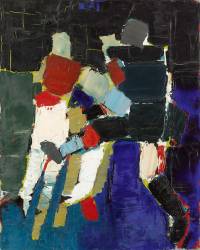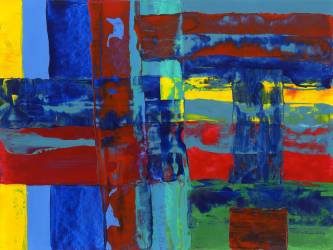Comtemporary abstract paintings
Between the 1920s and 1950s, hundreds of artists converted to abstract paintings. After the Second World War, abstract painting in its contemporary period will be successful and reach its peak. The Paris school (Hartung) and a new generation of American artists with Rothko, Pollock...then evolve towards the representation of subjective impressions without any search for form with an expressive art that will culminate in informal art, minimal, lyrical abstraction and American action painting. The end of the Second World War saw New York become the capital of contemporary art. A generation of American painters uninhibited, ambitious and influenced by European artists in exile takes up the torch. The "A New American Painting" exhibition, featuring works by Jackson Pollock, Willem de Kooning and Mark Rothko, will tour the Old Continent. The Abstract Art is then on the verge of speed with the advent of Pop Art in the 1960s. Contemporary abstract painting is also well represented in France with major painters such as Hans Hartung, Nicolas de Staël and Maurice Estève who mainly compose lyrical abstract paintings.















































































































































